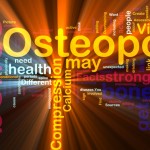
Saturday 20 October is World Osteoporosis day raising awareness about osteoporosis and fragile bones. In a previous blog The Musculoskeletal Elf discussed Best risk assessment advice for people with fragility fractures. However, despite the availability of effective treatments it appears that the majority of people presenting with a minimal trauma fracture (also known as ‘osteoporotic’, ‘low trauma’ or ‘fragility’ fractures) are neither assessed for osteoporosis, nor treated for osteoporosis to reduce their risk of further fractures. A team from Australia undertook a systematic review to evaluate the effectiveness of published models of care for the secondary prevention of osteoporotic fractures.
Here’s what they did
The authors searched electronic databases (1996 and 2011) for studies describing models of care for secondary fracture prevention. Out of 574 references, 42 articles were identified as analysable and meta-analyses of studies with valid control groups were conducted for two outcome measures: Bone Mineral Density (BMD) testing and osteoporosis treatment initiation.
Here’s what they found
These studies were grouped into four general models of care-type
- Type A: identification, assessment and treatment of patients as part of the service;
- Type B: similar to A, without treatment initiation;
- Type C: alerting patients plus primary care physicians;
- Type D: patient education only.
- Meta-regressions revealed a trend towards increased Bone Mineral Density (BMD) testing (p = 0.06) and treatment initiation (p = 0.03) with increasing intensity of intervention.
- One type A service with a valid control group showed a significant decrease in re-fractures.
- Types A and B services were cost-effective, although definition of cost-effectiveness varied between studies.
- Type D services of participant or patient education alone appears to have little
or no impact on rates of treatment initiation.
The authors’ concluded
“Fully coordinated, intensive models of care for secondary fracture prevention are more effective in improving patient outcomes than approaches involving alerts and/or education only.”
The Musculoskeletal Elf’s view
 The authors of this review report that there was significant heterogeneity between included studies and inconsistent reporting of results in regards to clinical outcomes, patient numbers, study design, risk of bias, gender proportions and fracture sites.
The authors of this review report that there was significant heterogeneity between included studies and inconsistent reporting of results in regards to clinical outcomes, patient numbers, study design, risk of bias, gender proportions and fracture sites.
However, key issues identified in this review which need to be taken into account when developing and evaluating new patient pathways include; the specific health care system in which a care pathway is embedded; the intensity of the intervention; adherence to the intervention; the ‘window of opportunity’ i.e. the length of time between the fracture and the intervention; gender and ethnicity disparity.
Are you part of an osteoporosis or fragility fracture service? What is your role? What are your thoughts on this review? Are you involved in the development of pathways of care?
Send us your views on this blog and become part of the ever expanding Musculoskeletal Elf community.
Links
- K. Ganda, M. Puech, J. S. Chen, R. Speerin, J. Bleasel, J. R. Center, J. A. Eisman, L. March M. J. Seibel 2012 Models of care for the secondary prevention of osteoporotic fractures: a systematic review and meta-analysis Osteoporosis International 2012, DOI: 10.1007/s00198-012-2090-y
- National Osteoporosis Society UK [accessed 18th August 2012]
- NHS Choices Osteoporosis [accessed 18th August 2012]
- Arthritis Research UK Osteoporosis
- MSK Elf 2012 Best risk assessment advice for people with fragility fractures

